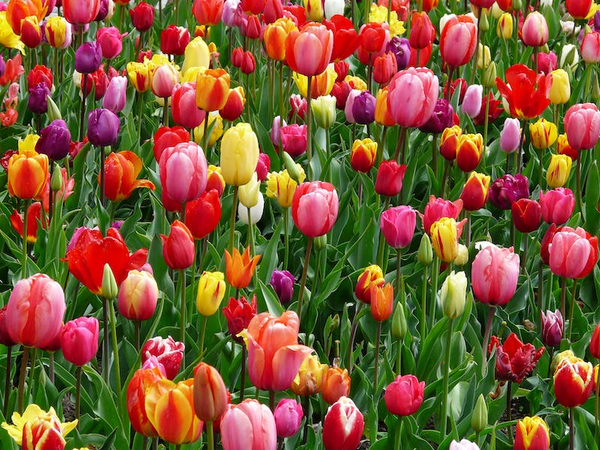
With their vibrant colours and elegant blooms, tulips are a lovely addition to any garden. Careful selection and planting of tulip bulbs are essential to ensure these beautiful flowers look their best. This article provides expert tips on choosing the right bulbs and planting them for optimal growth and long-term beauty. Whether you’re a novice or a seasoned gardener, these guidelines will help you design a stunning tulip display that everyone will envy.
Choosing Healthy Flower Bulbs
The first step to successfully growing tulips is choosing quality bulbs. When buying tulip bulbs, choose firm, plump bulbs that indicate good health. Avoid soft, mouldy, or damaged bulbs. Look for onions with intact skins and no signs of rot or disease. Choosing the right size bulbs is also desirable, as smaller bulbs can lead to weak flowering.
Consider Flowering Time and Variety
Tulips come in many different colours, shapes and flowering times. Select small tulip bulbs for sale and plant them carefully. When choosing tulip varieties, consider the flowering time. The tulips bloom at different times, from early to mid to late so that you can enjoy the flowering period for a longer period of time. Plan your garden accordingly to create an enchanting sight throughout spring.
Think about the colour scheme and overall composition of your garden. Tulips offer a range of shades, from bold, vibrant colours to soft pastels. Choose complementary colours or create a nice contrast to make your tulip garden visually appealing.
Prepare the Ground
Before planting tulip bulbs, it is essential to arrange the soil properly. Tulips prefer well-drained soil that is prosperous in organic matter. Plough the soil to a depth of at least 30 centimetres and remove weeds and stones. Mix in compost or well-rotted manure to boost soil fertility and structure.
Planting Depth and Spacing
Planting depth and spacing are critical to successful tulip growth. Dig a hole about three times the height of the bulb. Insert the light bulb into the hole with the tip facing up. As a rule, it should be planted twice as deep as the bulb. Adequate clearance is also essential to ensure proper airflow and prevent overcrowding. Space the bulbs at least 10-15 centimetres apart, depending on the variety. This is an important step, according to every garden expert.
Make sure you have Plenty of Water and Sunlight.
Tulips need plenty of water and sunlight to grow healthy. After planting the bulbs, water them thoroughly to settle the soil and encourage root development. During the growing season, tulips prefer constant moisture but avoid over-watering, which can cause the bulbs to rot. Give it plenty of water once a week, but more often when it’s dry.
Tulips can grow in full or partial sun. Get at least 6 hours of direct sunlight each day. If your garden has a partially shaded area, choose a tulip variety that suits the conditions.
Maintenance and Aftercare
Essential aftercare is required to maintain the beauty of tulips. Remove faded flowers to prevent seed formation and promote bulb energy conservation. Allow the leaves to die off independently so that the bulbs can store energy for next year’s growth. Avoid cutting back leaves prematurely or braiding.
Consider applying a balanced slow-release fertiliser in early spring to build up healthy growth. Mulching the soil around the bulb can help retain moisture and suppress weeds.
Avoid Planting Near Roots
First, you must dig pretty deep to get the proper depth to plant tulips, and digging 6 to 8 inches into the ground near the tree’s base can be difficult. Secondly, digging the root system of trees and shrubs is not recommended. You can accidentally damage the tree’s roots and cut them into thin threadlike vegetative roots near the surface. This makes it difficult for the tree to absorb water, nutrients and can weaken the tree.
Finally, planting tulips at the base of trees increases the chance that the area will be in full shade in mid to late spring. As the trees grow leaves, they limit or block the sunlight that hits the tulips. Tulips are best planted in sunny locations. Try planting tulip bulbs in spring and summer annual flower beds. By spring, when you’re ready to plant impatiens and petunias, the tulips will have finished flowering and growing.
Conclusion
The most epochal of all bulbs, the tulip has a simple, elegant beauty that has captivated gardeners for hundreds of years. It looks dignified yet attractive when displayed in a garden, border, container or window box. They come in fantastic colours and sizes and can be easily trimmed to create gorgeous spring bouquets. Follow these gardening and expert tips to bring the best out of your tulips. Fetch the best tulip bulbs and secure your garden space with a desirable beauty.
Ref:



 POSTED BY
POSTED BY 

